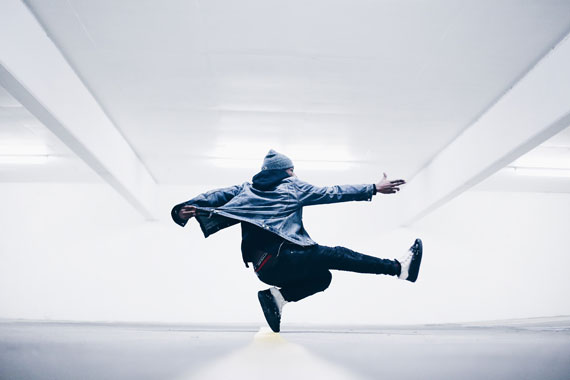Most of us, especially beginner photographers, know flash as a tool to add light. But do you know that you can use flash to capture and freeze motion as well? So, a flash is your best friend, whether you’re taking portraits where the subjects are showing off some high-energy poses, or taking product photos with a lot of movement involved. By using a flash correctly, you can ensure that the subject is well-frozen and that it appears tack-sharp.
In today’s video, we have photographer Pye Jirsa with Adorama who walks you through the setup and techniques for capturing dance portraits in motion. You can use the same principles and techniques to capture and freeze any sort of motion using flash:

In the case of Jirsa’s example, he has a dancer in the studio; this means lots of motion involved. If you too find yourself photographing in a similar situation, be sure to use a wide-angle lens, and a high-megapixel camera. This will ensure that your frame will be able to accommodate most of the poses of your subject and that you can easily crop the image if need be.
Another very important thing to consider when working with flash is to ensure that you cut down the ambient light. This will ensure that your final image is affected only by the light from the flash. In the video, you can see how Jirsa adjusts his shutter speed and ISO to get a dark frame. Once you block the ambient light, you can then set up your flash to light up the scene.
“You can actually freeze your subject using your flash so long as you’re not running it at a very high power setting.”
However, when you’re trying to freeze motion using flash, the flash power you choose to work with becomes crucial. Make sure that you get the desired result while setting the flash to as low power as possible. That’s because when you use a higher power setting, you’ll face issues with the flash recycle time and soft-looking images. Jirsa explains in detail about these in the video. Be sure to watch the complete video.

Photo captured by Drew Dizzy Graham
So remember, the next time you need to freeze motion, all you need to do is to:
- set your camera to shoot at a fast shutter speed in continuous frame mode; a compatible flash that supports high-speed sync would be preferred
- block the ambient light from affecting your images
- raise your ISO
- set the flash power closer to the minimum power
Doing so, you’ll easily be able to get tack-sharp images of your moving subject. Give it a try!
Like This Article?
Don't Miss The Next One!
Join over 100,000 photographers of all experience levels who receive our free photography tips and articles to stay current:





